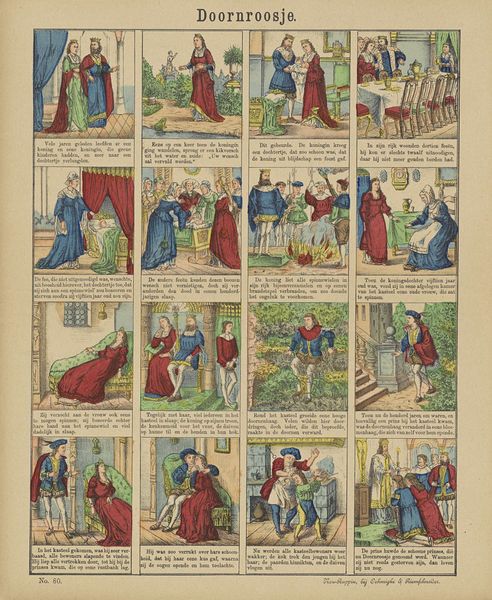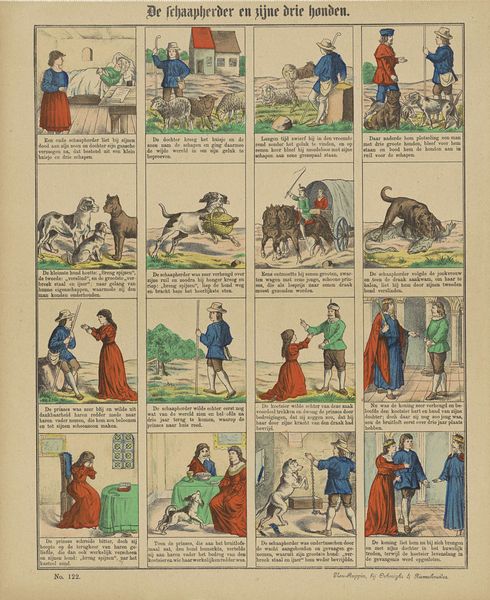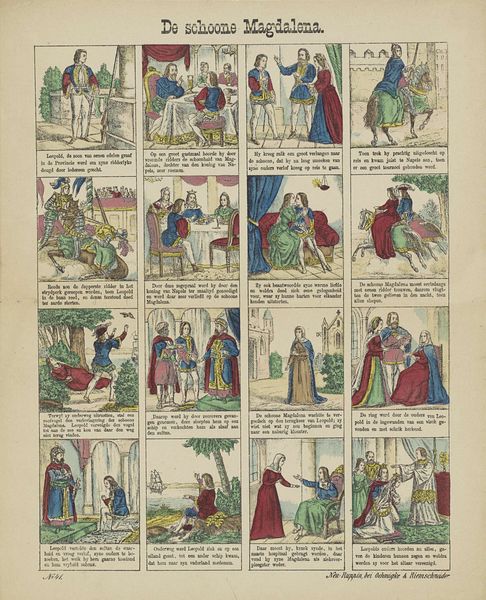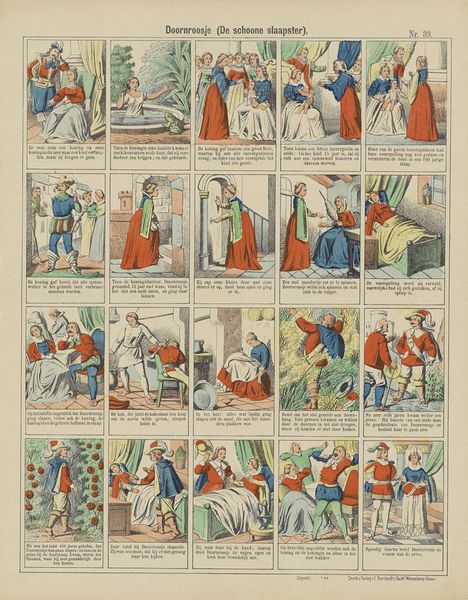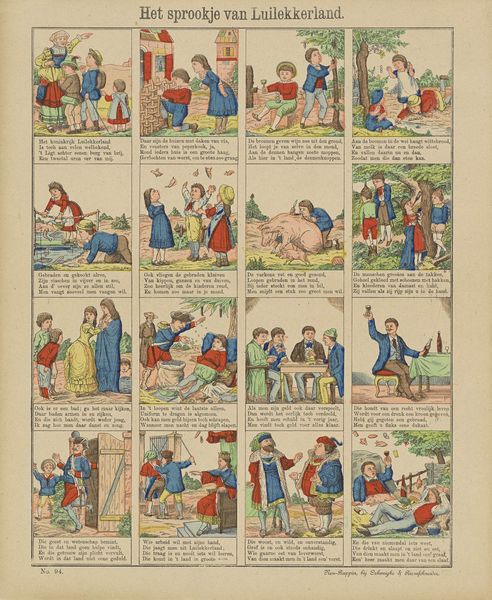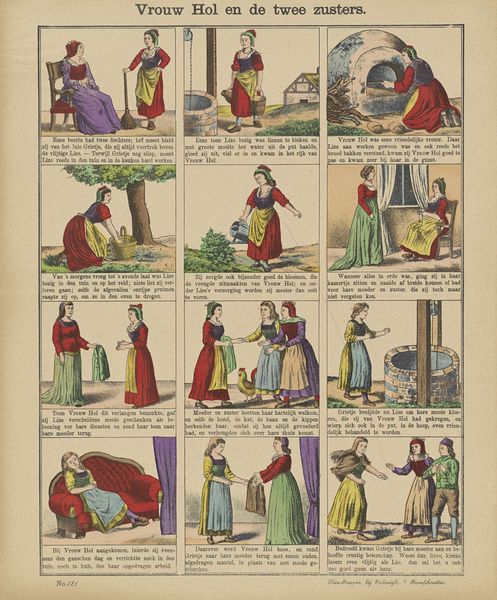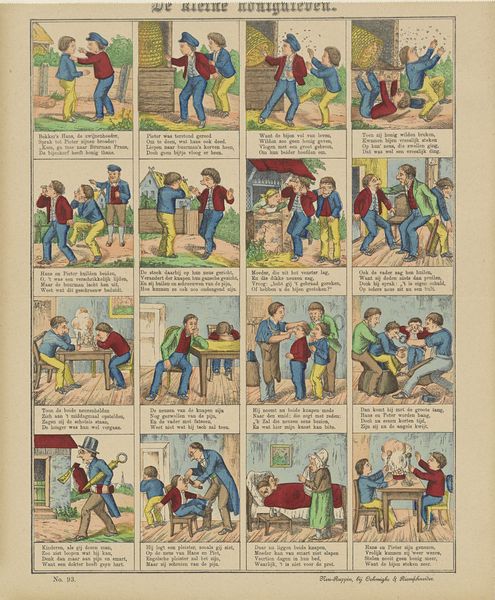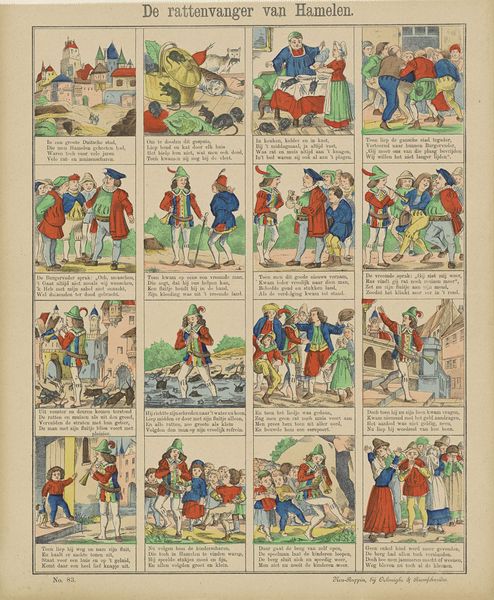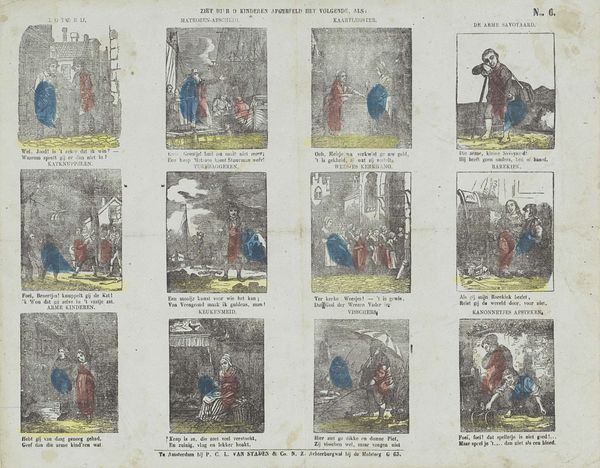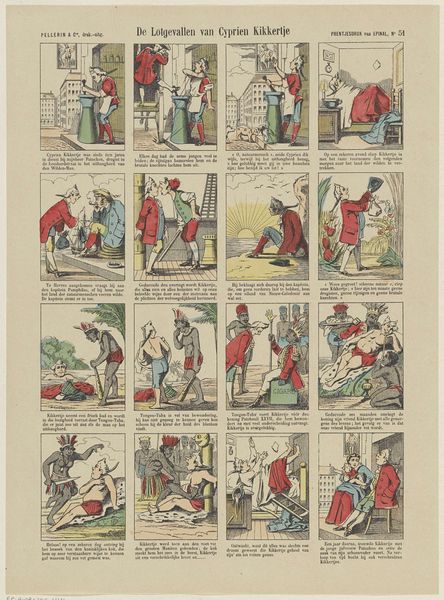
#
comic strip sketch
#
narrative-art
#
comic strip
# print
#
sketch book
#
cartoon sketch
#
personal sketchbook
#
sketchwork
#
illustrative and welcoming imagery
#
comic
#
sketchbook drawing
#
genre-painting
#
storyboard and sketchbook work
#
sketchbook art
Dimensions: height 406 mm, width 337 mm
Copyright: Rijks Museum: Open Domain
Editor: This artwork, entitled "De drie zwanen," or "The Three Swans," is an early print created sometime between 1828 and 1937 by Oehmigke & Riemschnieder. It resembles a series of comic-strip panels, a narrative told through these small vignettes. The limited color palette is quite striking. What compositional elements stand out to you? Curator: The rigid grid structure is paramount. The visual narrative unfolds linearly, demanding we analyze each framed scene in relation to the others. Consider the repetition of the central figure, costumed identically across panels; his attire acts as a visual anchor throughout the story. Editor: It almost feels like a storyboard, where the progression and use of the central figure give us the impression of events taking place. How does color play into its interpretation? Curator: Indeed, the use of a restricted, almost muted palette enforces a deliberate simplification. Notice how the subtle shifts in coloration guide the eye and perhaps even signal changes in mood or narrative focus. The semiotics of color—the blues suggesting serenity, the reds, perhaps, passion or danger— warrant close inspection. Editor: Do you think this restricted palette enhances the storytelling or limits it in some way? Curator: Restricting the color directs the viewers gaze through visual dependency, to what lies within the grid structure. A choice to enrich, or constrain, always leads to new avenues of inspection, the signifier that points toward new horizons, or reflects upon its surface to what is truly held within its creation. Editor: That’s a great way to think about it. Thanks for sharing your expertise. Curator: My pleasure. I find myself returning to the piece again. Its visual rhetoric and structural complexity certainly deserve future study.
Comments
No comments
Be the first to comment and join the conversation on the ultimate creative platform.
